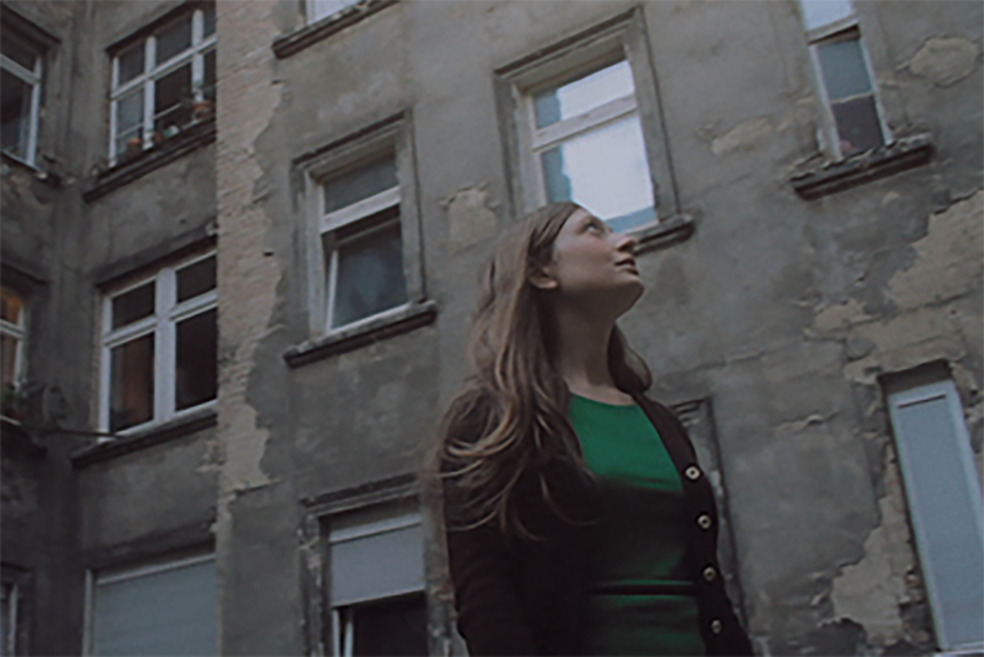15’08”, Short film, Berlin
Hinterhof shows the radically voyeuristic gaze of a girl that is fascinated by the outside world that unfolds in front of her eyes, to the extent that it becomes impossible for her to look away. She does not only see the world; she also shapes the world upon which she looks from a safe distance.
Hinterhof is based on Rear Window (Alfred Hitchcock) but it is not just a remake. Hinterhof restages scenes, directions of view and characters of the original movie, but imports them into another narrative and another pictorial language.
In Hinterhof, cinema goes back to basics. No grand sets or expensive special effects, no extended cast, nor an expanded crew of production assistants. Only one actress who continually renames herself into other characters. This multiple duplication could easily be approached from a psychoanalytic perspective. But rather than calling into being a narcissistic mirror palace, the chosen strategy of duplication creates a kaleidoscopic universe in which the body is used as the simplest of tools to uncover the mechanisms behind the medium film (like the development of narrative, the editing process and our perception of the dramatic space). In doing so, Ariane returns to a number of basic questions with which the filmic medium – and broader: visual culture – is already engaged for quite some time: how is fiction being created? How does an interplay come into being between estrangement and suspension of disbelief? And to what extent is montage more important than the perfect visual illusion, when creating a cinematic world?

